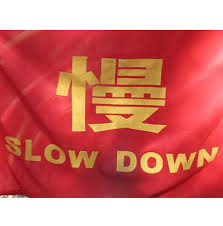
Exclusively from Michael Pettis’ newsletter
This will certainly seem surprising to many, but as I see it the [currency] trading band is not an indication of a greater role for the market but rather almost the opposite – an attempt by the PBoC to limit the ability of the market to force it into changing its exchange rate target. I think the PBoC is probably right in trying to prevent speculative capital flows from influencing the exchange rate, but I do not see this as an example of greater exchange rate freedom. This is why, in part, I have always argued that the RMB would continue to appreciate rather than respond to the weaker export growth or capital outflows of the pas three years by depreciating.
The RMB will appreciate because a stronger RMB higher interest rates, and higher wages in the aggregate are required for a Chinese rebalancing. All of these things are difficult because the Chinese economy has become dependent on a cheap currency, low interest rates, and low wages for its growth. If the PBoC were to devalue the RMB, it would simply require even higher interest rates or faster wage growth in order to obtain the same amount of rebalancing.
As for more “flexibility” on the interest rate, I find this to be also a very muddled interpretation of what is happening. In my opinion the only way interest rates become more flexible is if the deposit rate is allowed to float. Every other interest rate in China is effectively priced off the deposit rate, and it is the extraordinarily low deposit rate of the past decade that has determined the extraordinarily low lending rates for those who have access to bank credit.
Has there been any movement towards greater flexibility in setting the deposit rate? Not really, in spite of the move earlier this year to allow banks to charge up to 10% above the deposit cap. Many people have seen this move as creating flexibility in setting deposit rates, but of course it does no such thing. A cap with 10% “flexibility” is just a cap. In effect introducing the 10% “flexibility” was no different than raising the cap by 10%.
Just as in the case of the exchange rate, in other words, there was no additional flexibility. But China does not need, at this point, to introduce flexibility in setting the deposit rate. If it did, we would probably see two things. First the entire Wealth Management Product (WMP) universe would be quickly transferred onto banks’ balance sheets as WMP represent largely an attempt by banks to pay higher deposit rates by pretending they are not deposits. Second, deposit rates would immediately surge. This is clear from the fact that WMP and MoF deposit auctions (which are not limited by the cap) yield much more than deposits.
But while allowing flexibility in setting deposit rates is good for China in the medium and long term, allowing deposit rates to rise in the short term would be devastating. Borrowing costs would immediately surge, and China is already too over-leveraged to permit this. Surging lending rates would spread financial distress throughout the economy.
What Beijing is really doing is actually much better for the economy. The PBoC has not introduced any flexibility into its setting of interest rates, but it is holding interest rates steady while nominal GDP growth slows. This matters because the problem with the Chinese financial system is not that interest rates are set, but rather that they are set too low, and the amount by which they are set too low is roughly equal to the difference between the nominal GDP growth rate and the nominal lending rate. It is this difference that creates both the imbalance in the consumption share of GDP and the tendency to misallocate investment.

